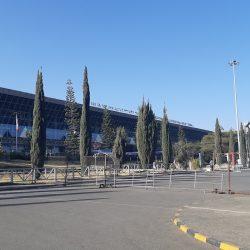Ethiopia, a country rich in history and culture, has undergone several administrative transformations over the years. From its traditional provinces to modern regional states, Ethiopia’s administrative divisions reflect its diverse ethnic, linguistic, and cultural heritage.
Current Administrative Divisions of Ethiopia
Ethiopia is divided into ten kilil (regional states) and two astedader (chartered cities). These regions are largely based on ethnic lines, reflecting Ethiopia’s ethnic federalism model under the 1995 Constitution.
- Regional States (Kilil):
- Afar
- Amhara
- Benishangul-Gumuz
- Gambela Peoples
- Harari People
- Oromia
- Sidama
- Somali
- Southern Nations, Nationalities, and Peoples (SNNPR)
- Tigray
- Chartered Cities (Astedader):
- Addis Ababa (Federal Capital)
- Dire Dawa
Historical Administrative Changes
1950s-1960s: Provinces and Subprovinces
- Ethiopia was divided into twelve teklay ghizatoch (provinces) in 1953, later expanding to 14 provinces by 1965.
- Provinces were subdivided into 76 awraji ghizatoch (subprovinces) and further into wereda (districts) and mikitil wereda (subdistricts).
1974: Transition to Regions
- After the 1974 revolution, provinces were renamed kifle hager (regions).
- Subdivisions included 102 awraja and 556 wereda.
1987: Reorganization into Regions and Autonomous Areas
- Ethiopia introduced 25 administrative regions and five autonomous regions:
- Autonomous regions included Āseb, Dire Dawa, Eritrea, Ogadēn, and Tigray.
- This structure, however, was not fully implemented.
1991: Twelve Autonomous Regions
- Following the fall of the Derg regime, Ethiopia was reorganized into 12 rasgez akababiwach (autonomous regions) and two chartered cities (Addis Ababa and Harer).
1993: Eritrea Gains Independence
- Eritrea, along with the Āseb region, became independent on May 27, 1993, reducing Ethiopia’s regions.
1995: Ethnic Federalism
- Under the new constitution, Ethiopia was divided into nine regional states (kilil) and one federal capital.
- Dire Dawa became an administration in ~1998.
Key Features of Ethiopia’s Current System
Ethnic Federalism
- The regions (kilil) enjoy significant autonomy, with the right to:
- Establish their official language.
- Manage their own security forces.
- Conduct a referendum on secession from Ethiopia.
Chartered Cities
- Addis Ababa and Dire Dawa function as separate administrations due to their unique demographic and geographic contexts.
Zones and Districts
- Regions are further divided into zones, wereda (districts), and kebele (local councils).
Name Origins of Regions and Cities
- Addis Ababa: Amharic for “New Flower.”
- Harar: Derived from a term meaning “commercial station.”
- Somali: Reflects the Somali ethnic group’s heritage.

Ethiopia’s dynamic administrative history reflects its complex and diverse sociopolitical landscape. From imperial provinces to ethnic-based federal regions, the nation’s administrative divisions highlight its evolution while addressing the needs of its various communities. The current structure, though imperfect, aims to balance local autonomy with national unity, serving as a framework for governance in this multicultural state.




